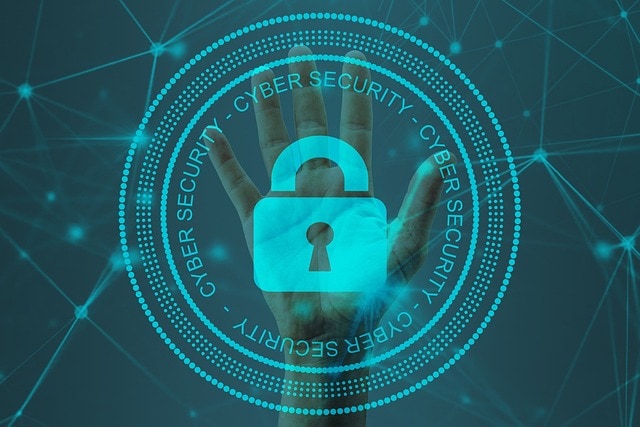Cybersecurity is a critical concern for all businesses, regardless of size. However, small and medium businesses (SMBs) are often more vulnerable to cyberattacks, as they may not have the same resources and expertise as larger companies.
The imperative for these enterprises to prioritize cybersecurity is more pronounced than ever. The interconnected nature of modern business operations exposes them to a myriad of cyber threats, making it essential for SMBs to implement robust measures to safeguard their digital assets.
Continue reading as we explore practical and effective cybersecurity best practices tailored to the specific needs of small and medium businesses.
Understanding the Cybersecurity Landscape
As businesses increasingly rely on digital platforms for their operations, the threat landscape has expanded accordingly. Cybercriminals exploit vulnerabilities, aiming to compromise sensitive data and disrupt business continuity. Recognizing this reality is the first step toward implementing proactive cybersecurity measures.
Securing Your Digital Environment
When it comes to security in the digital world, there are a few ways SMBs can protect themselves:
Conduct a Security Assessment
Understanding your current threats is the first step in strengthening your cybersecurity posture. This can be accomplished by performing a security assessment. Your weaknesses will be identified through a security evaluation, which will also offer suggestions for how to address them.
An evaluation of security can be done in a variety of ways. Performing the exam yourself, using an internet tool, or hiring a cybersecurity professional are all options. Numerous online resources are available to get you started if you decide to do the exam yourself.
Password Management
Implementing a stringent password policy is foundational to cybersecurity. Encourage employees to create complex passwords and consider adopting multi-factor authentication to fortify access controls.
Employee Training
Human error remains a significant factor in cybersecurity breaches. Awareness programs contribute to a security-conscious organizational culture. Phishing attacks, social engineering attacks, and other cyberattacks often target employees.
It is important to train your employees on cybersecurity best practices. This training should cover topics such as how to identify and avoid phishing attacks, how to create strong passwords, and how to protect sensitive data.
Regular Software Updates
Software developers regularly release security updates to patch vulnerabilities in their software. It is important to install these updates as soon as they are available.
You can automate the software update process by using a patch management tool. A patch management tool will scan your systems for missing updates and install them automatically.
Firewalls and Antivirus Solutions
Install reliable antivirus software and strong firewalls to provide a solid barrier against malicious activities. Before potential threats jeopardize the integrity of your systems, these tools serve as a barrier, identifying and stopping them.
A firewall is a piece of network security equipment that keeps an eye on and manages all inbound and outbound network traffic. It can assist in defending your network from malicious traffic and illegal access. There are numerous firewall configurations to choose from. You can purchase a standalone firewall device or use a software firewall.
Data Encryption
Safeguard sensitive information through encryption protocols. Encrypting data adds an additional layer of protection, ensuring that even if unauthorized access occurs, the data remains indecipherable.
Backups
Prevent downtime and potential data loss in the case of a cyber-attack by regularly backing up important data and making sure that recovery procedures are in place. Your data can be backed up in a variety of ways. Data backup options include using a cloud storage service, an external hard drive, or both.
Secure Network Practices
Secure Wi-Fi networks by employing strong encryption methods and regularly updating router firmware. Protecting network integrity is paramount for preventing unauthorized access to sensitive data.
Vendor Security Assessment
Extend cybersecurity diligence to third-party vendors. Assess the security practices of partners and suppliers to mitigate risks associated with interconnected business ecosystems.
Implement a Security Policy
Once you understand your risks, you should develop and implement a security policy. A security policy is a document that outlines your company’s cybersecurity requirements. It should include policies on passwords, data protection, and acceptable use of company resources.
Your security policy should be communicated to all employees and regularly reviewed and updated.
Multi-Factor Authentication (MFA)
Strong passwords and MFA are two of the most effective ways to protect your accounts from cyberattacks. A strong password is at least 12 characters long and includes a mix of upper and lowercase letters, numbers, and symbols. You should avoid using common words and phrases in your passwords.
MFA adds an extra layer of security to your accounts by requiring you to enter a code from your phone in addition to your password when logging in.
Careful Clicks
Cyberattacks like phishing typically use deception to get their victims to open attachments or click on nefarious sites.
It’s essential to use caution when opening and clicking on anything. Do not open attachments or click on links in emails sent to you by unknown senders. When in doubt, get in touch with the sender of the email to confirm its legitimacy.
Incident Response Plan
Having a strategy in place for countering an attack in the case of a cyberattack is crucial. The procedures in your incident response strategy should involve recognizing the attack, containing it, stopping it, and recovering from it. To make sure your incident response plan is efficient, test it frequently.
Hire A Professional
Consider hiring a managed security service provider (MSSP). An MSSP can provide your business with cybersecurity expertise and resources that you may not have in-house.
You can use a cloud-based security solution, as it can provide your business with scalable shielding that adapts to your evolving needs. By leveraging the power of the cloud, these solutions offer not only robust protection but also the flexibility to grow with your business.
Adapt and Overcome
The realm of cybersecurity demands continual attention and adaptation. By adopting these best practices, small and medium businesses can fortify their defenses against evolving cyber threats. A proactive and comprehensive approach to cybersecurity is an investment in the sustainability and resilience of any organization in today’s digital landscape. Stay informed, stay vigilant, and empower your business to navigate the digital realm securely.
Empower your business with proactive cybersecurity. Visit CMIT Solutions Northern Shenandoah Valley now to schedule a consultation and fortify your digital defenses. Don’t wait; safeguard your assets and ensure the resilience of your business in today’s dynamic cyber landscape.





